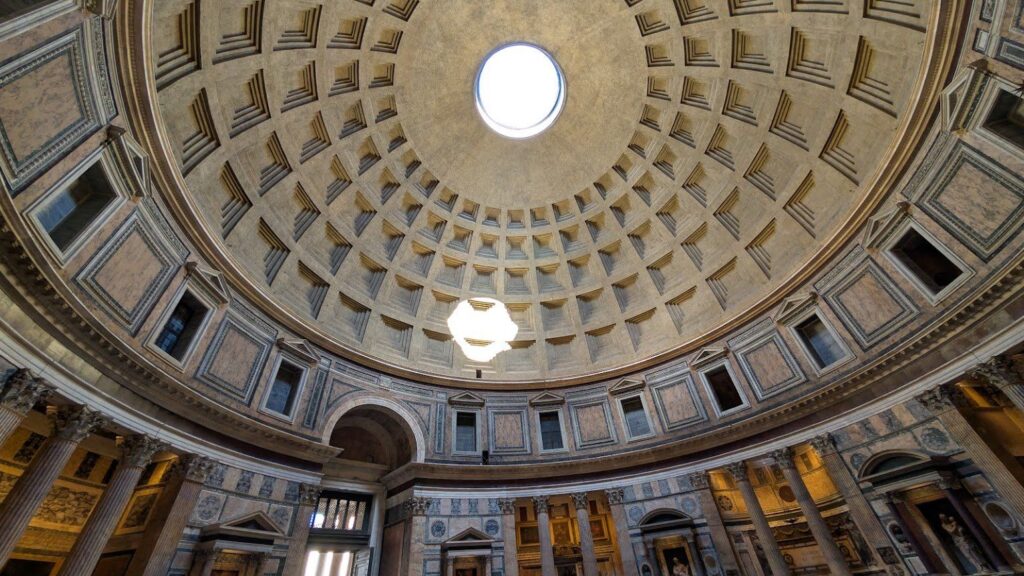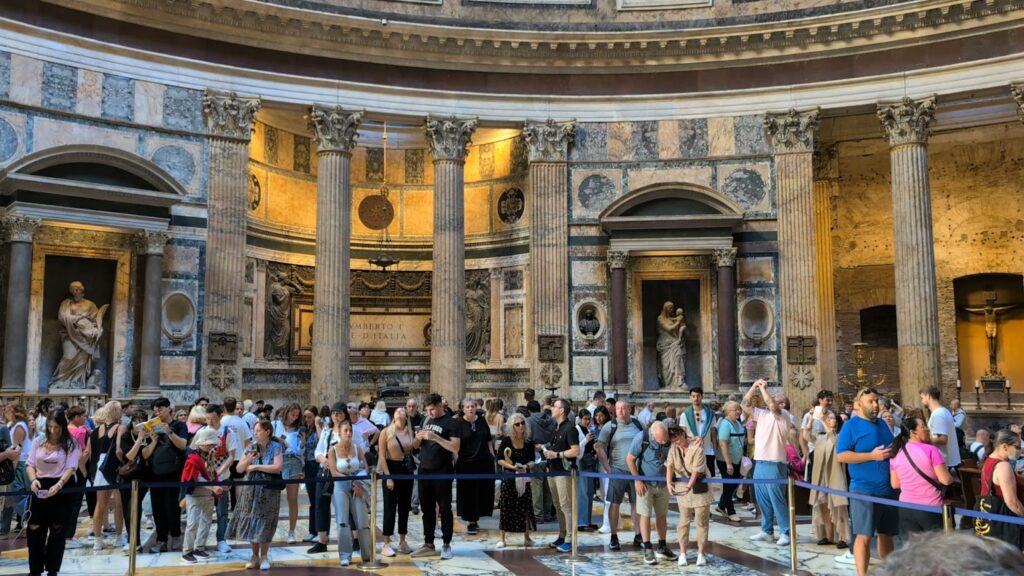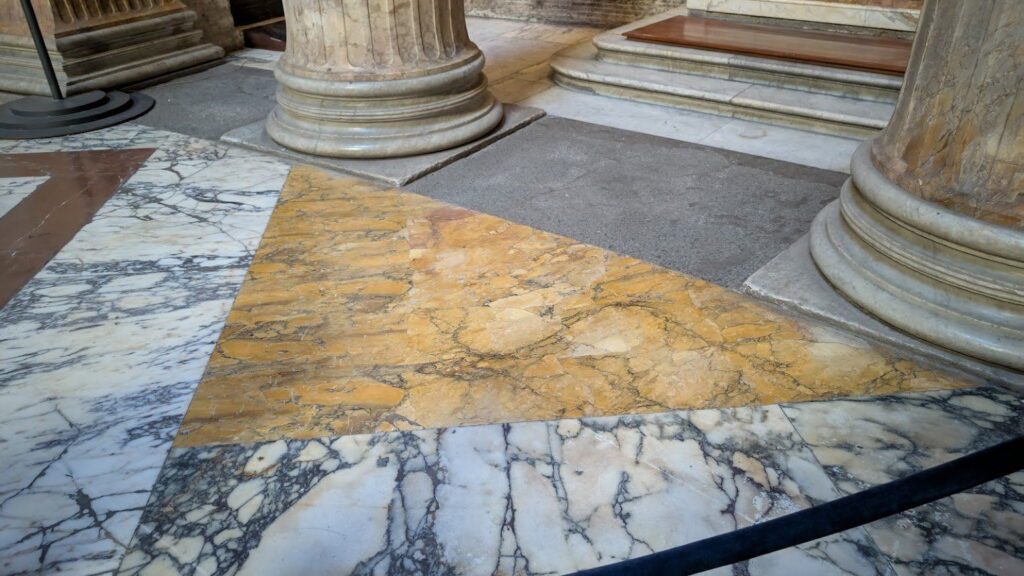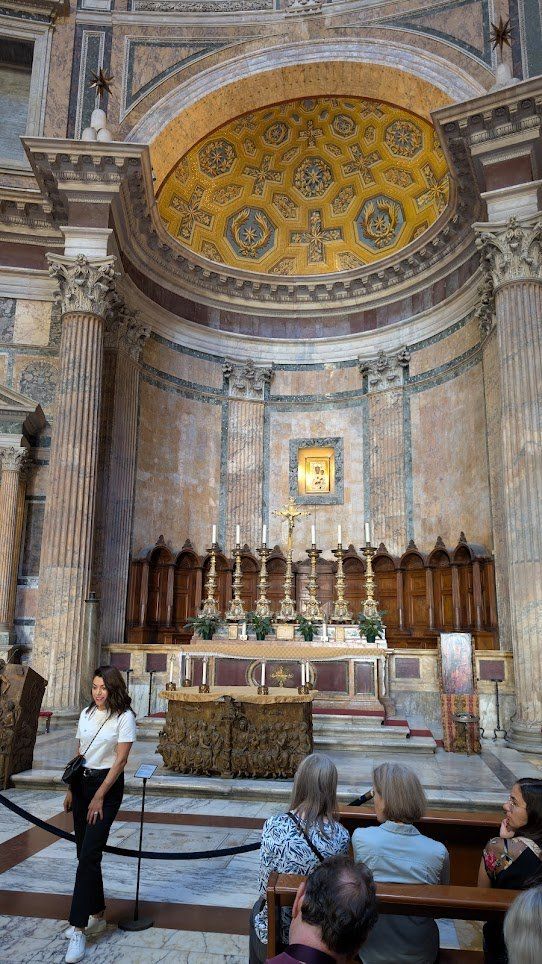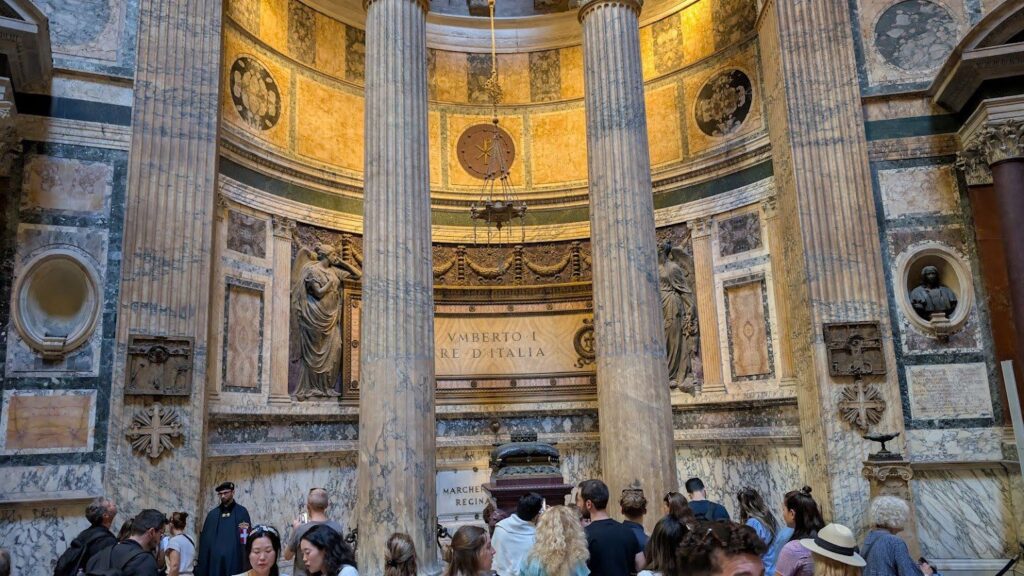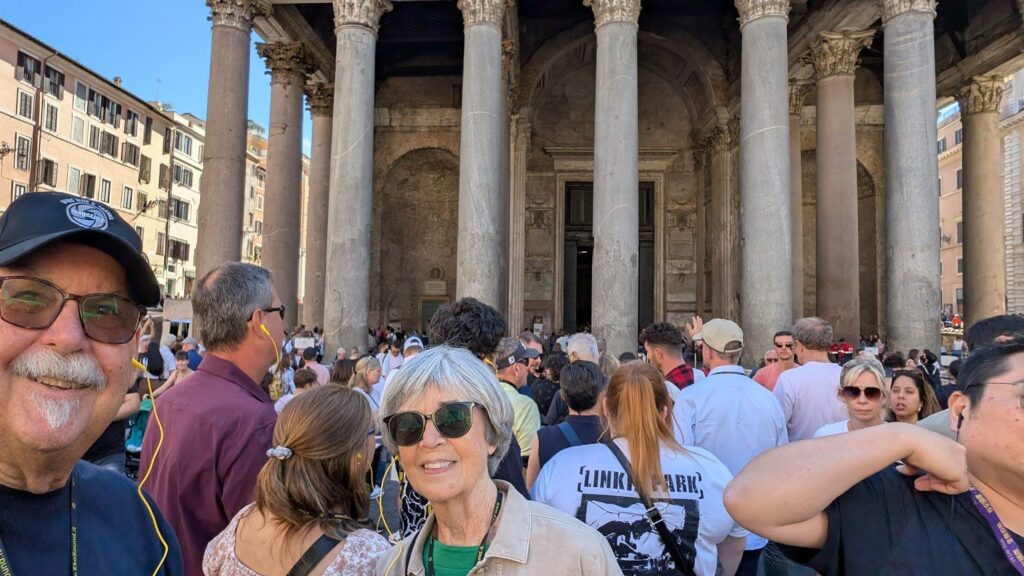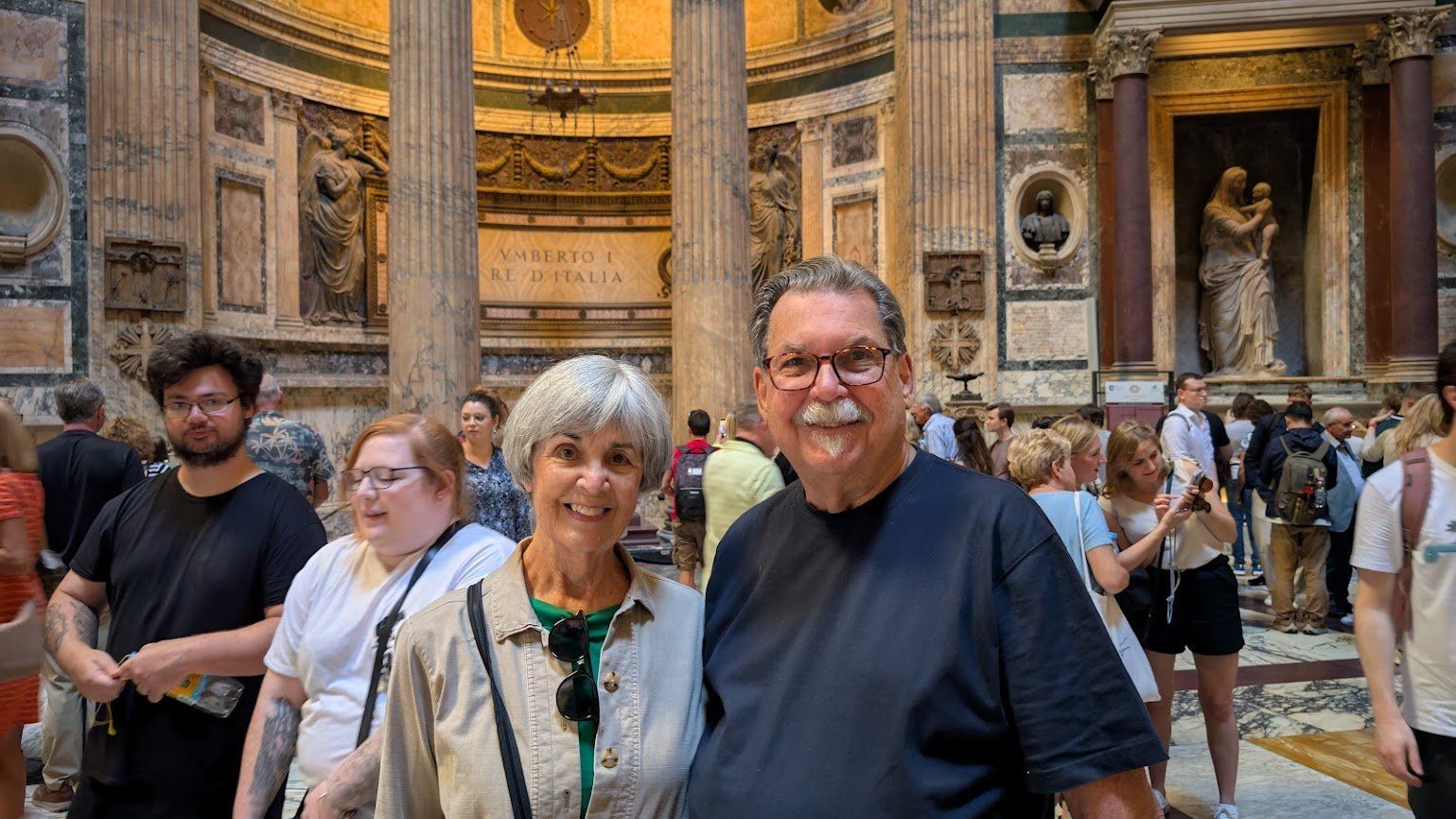There’s a travel lesson to be learned from our tour of the Pantheon yesterday.
We’ve stayed in Rome three times previously, twice just a block from the Pantheon. Back then, there was no charge to enter, so we simply walked in, looked around, and thought, “Pretty cool ancient place,” before heading off to see other attractions.
That was eight years ago. We’ve traveled many miles since then and learned a few things about how to plan visits to historic landmarks. Even if significant places are free and easily accessible, a knowledgeable guide is essential to truly understand what you’re seeing. There are always stories behind even the most ordinary scenes and objects. These fascinating tales bring history and the destination to life.
Our guide, an art student, did just that yesterday. He explained that the Pantheon has been a Christian church for centuries, yet it remains the best-preserved ancient Roman building in Rome. Originally built around 27 BC by Marcus Agrippa and rebuilt by Emperor Hadrian in AD 126, the Pantheon stands as one of the greatest engineering achievements of the ancient world. Its name, which means “temple of all the gods,” reflects its original role in Roman religion, though it’s not known which specific gods were worshiped here.
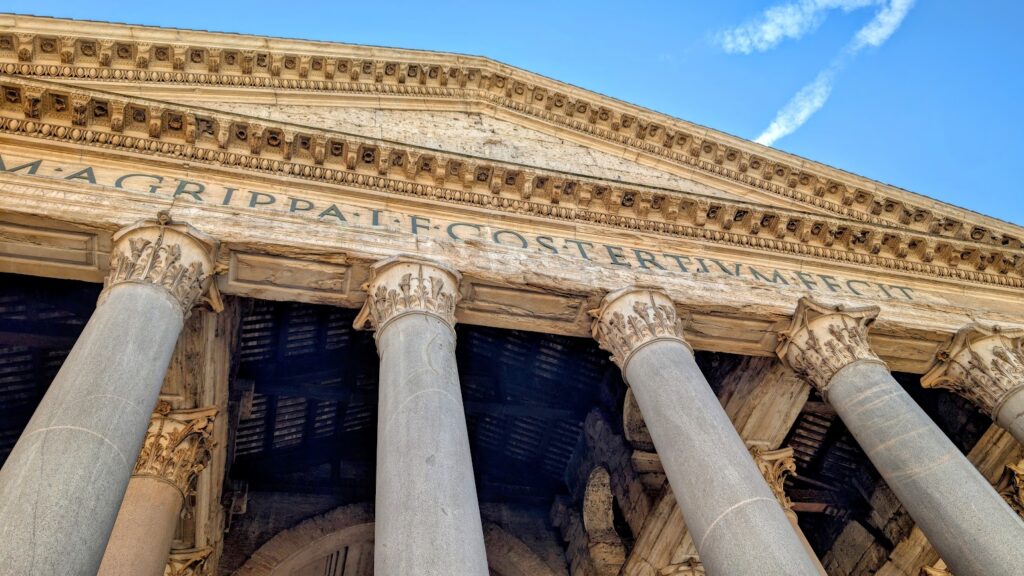
The Pantheon’s most famous feature is its massive dome—the largest unreinforced concrete dome in the world. This engineering marvel is supported by a sophisticated system of eight piers forming a circular drum beneath the dome. Hidden arches within the thick walls and the columns of the portico play a crucial role in distributing the immense weight.
The dome’s thickness varies from about 20 feet at its base to just a few feet near the oculus, which reduces the overall weight. Lighter materials, such as pumice mixed into the concrete used near the top, further enhance stability.
The light streaming through the oculus moves across the floor and walls like a sundial, a reminder of how ingeniously the Romans blended art and science in their structures. Equally impressive is an ancient drainage system that carries away rain that falls through the open oculus so the floors don’t flood.
The intricately patterned floors were created from marble from across the Mediterranean, each colorful slab demonstrating the empire’s reach. Columns outside the brass-clad entry door traveled by boat from Egypt. Viewing them, you can’t help but be impressed by ancient Rome’s power and wealth.
Among the Pantheon’s other highlights is its role as a mausoleum for some of Italy’s most important figures. Renaissance artist Raphael is buried here, as are several Italian kings, including the one that unified Italy. All add to the building’s historical significance through the ages.
The Pantheon’s design has inspired some of the world’s most iconic buildings, including St. Peter’s Basilica in Vatican City and Filippo Brunelleschi’s design for Florence’s Duomo. More recently, the Panthéon in Paris and the Jefferson Memorial in Washington, D.C., both took cues from its grandeur and symmetry. The United States Capitol’s dome aimed to evoke its timelessness and strength.
Yesterday, the piazza outside the Pantheon was packed with thousands of people, all waiting to get in. But thanks to our guide, we bypassed the long lines and entered without delay. The tour cost included the five-euro entry fee.
The Pantheon came alive for us yesterday. This “pretty cool ancient place” will now be remembered for the marvel it is. That newfound appreciation makes yesterday’s tour one of our most valuable experiences in Rome to date.
